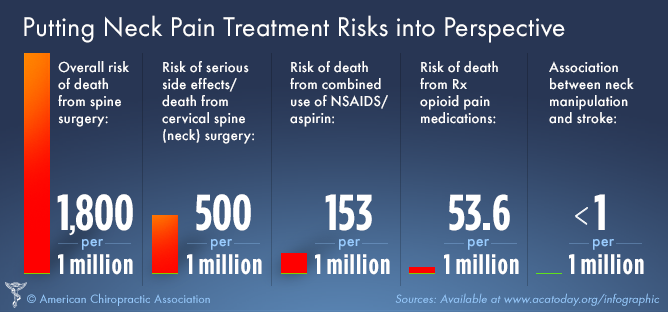Evaluating Acupuncture Versus Various Other Techniques For Pain Monitoring
Evaluating Acupuncture Versus Various Other Techniques For Pain Monitoring
Blog Article
Post By-Braswell Guldbrandsen
When you think about pain monitoring alternatives, you may find yourself weighing the advantages and disadvantages of various techniques, including acupuncture, non-prescription drugs, and physical therapy. While several methods provide relief, they commonly come with their own collection of difficulties, like side effects or prolonged treatment times. Acupuncture stands apart for its one-of-a-kind capacity to advertise self-regulation with fewer dangers. Yet exactly how does its effectiveness contrast to more standard approaches? The nuances of these techniques can significantly influence your selections, and exploring them better can lead to unexpected understandings.
Summary of Discomfort Administration Techniques
When it comes to managing pain, you have a range of techniques at hand. These approaches can vary from standard methods to more alternative therapies. Comprehending your choices is crucial in finding what works best for you.
One usual strategy is non-prescription medications like ibuprofen or acetaminophen, which can offer fast alleviation for moderate to moderate pain. Prescription medications, consisting of opioids, might be needed for much more serious discomfort, though they include threats of dependency and side effects.
Physical therapy is another effective strategy, focusing on workouts and stretches to strengthen muscular tissues and improve wheelchair. This technique commonly helps in handling persistent pain problems.
Additionally, some individuals turn to more all natural alternatives, such as massage therapy, which can alleviate tension and boost blood circulation.
Mind-body methods, like mindfulness reflection or yoga exercise, aid you manage pain by minimizing tension and improving your psychological durability.
Lastly, way of living changes, such as keeping a healthy and balanced diet regimen and normal exercise, can play a crucial role in general discomfort administration. Each method has its benefits and drawbacks, so it's necessary to discover what matches your demands and preferences best.
Advantages of Acupuncture
Acupuncture offers an one-of-a-kind technique to discomfort monitoring that stands out among various techniques. By targeting specific points on your body, it stimulates the flow of energy, or "qi," advertising all-natural healing and lowering discomfort.
Among the greatest advantages is its marginal negative effects. Unlike some medicines, which can lead to reliance or unwanted wellness issues, acupuncture is an all natural treatment that motivates your body's self-regulation.
You'll likely find that acupuncture sessions can help soothe persistent discomfort, frustrations, and also stress and anxiety. Many individuals experience a feeling of relaxation and well-being during and after treatment, which can improve total quality of life.
Plus, it's a flexible choice; it can be made use of alongside various other treatments, making it a wonderful enhance to your existing pain management plan.
An additional significant advantage is that acupuncture can be tailored to your certain demands. Your specialist will certainly analyze your condition and create a customized treatment plan, guaranteeing you receive the treatment that best sustains your recovery.
With its old roots and expanding approval in modern medication, acupuncture attracts attention as an engaging choice for pain relief.
Contrasting Efficiency and Results
Pain administration strategies differ widely in their performance and outcomes, making it vital to comprehend how they stack up against each other. When taking into consideration alternatives like acupuncture, physical treatment, and medicine, you'll locate distinct differences in just how each method addresses pain.
Acupuncture, as an example, commonly provides relief for chronic discomfort conditions, with researches showing significant enhancements hurting levels for numerous people.
In contrast, medications like opioids can successfully take care of sharp pain however lug threats of dependence and side effects.
Physical treatment concentrates on rehabilitation and might take longer to show outcomes, which can be discouraging if you require prompt alleviation.
When reviewing these techniques, think about your specific pain type and your individual wellness goals. Some people discover that a combination of approaches functions ideal for them.
For instance, you could take advantage of acupuncture sessions along with physical treatment to optimize healing.
Eventually, recognizing the performance and results of each technique will aid you make notified decisions concerning your discomfort monitoring strategy, enabling you to select the technique that ideal matches your demands and lifestyle.
Conclusion
In recap, acupuncture stands out as an important choice to typical discomfort administration methods. https://when-to-see-doctor-after06273.get-blogging.com/33581011/examining-the-organization-in-between-chiropractic-care-adjustments-and-better-mobility supplies quick relief and promotes self-regulation without the risks of dependence associated with medicines. While physical treatment may demand more time for outcomes, acupuncture can provide instant advantages, making it an attractive choice for those seeking remedy for persistent discomfort and stress. By integrating acupuncture right into your discomfort administration strategy, you can enhance your general well-being and redeem control over your wellness.
